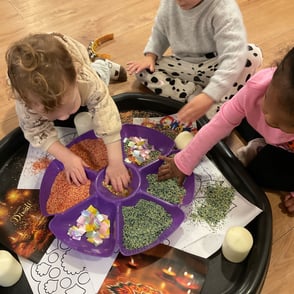Every child has different levels of confidence, which is only natural! Some children are outgoing and extroverted, and others may be less willing to talk to strangers and try new things. All children though, at one point or another, will face anxiety and worries, just like adults do and the best parents employ Parenting models that grant space and support for developing minds, whilst ensuring that children are fully secure that you're not going anywhere, emotionally, from them
Most worries are a normal part of growing up, such as separation anxiety which is common in children aged between 6 months and 3 years, or the development of one or two phobias at preschool age. But, what should you do when the small worries are starting to build up and become a bigger obstacle for your child? We have compiled advice from experts on how to calm children’s anxiety, to help you develop coping mechanisms.
How to Calm Children’s Anxiety? Five Tips from Experts
1. Try to Relax Your Child
Before starting to address what is worrying your child directly, it is often necessary to de-escalate their emotions and help return them to a level of calm. Anxiety can present itself in many ways, such as crying, tantrums or outbursts. If you find yourself facing one of these scenarios, try to find a quiet spot, which has as few people as possible. Help your child to recover their breathing, offer them a hug and when they are ready, adopt a calm but firm tone to talk over what the problem is.
There are several things that might help to soothe your child, such as their favourite soft toy, music or a book. Allow them time with these items when they are visibly stressed and most importantly, remain neutral and in control.
2. Offer Reassurance
Talk to your child about what it is that is causing them to worry. Demonstrate that you understand how they feel and reassure them that they are safe and what they are feeling is completely natural. It is common for children to feel particularly anxious around times of change, such as moving house, starting a new school or after a traumatic event. Finding a book or movie which addresses these issues is often a good method for validating your child’s emotions and helping them to process their feelings.
Children’s books on worrying, see here!
3. Have a Worry Box
Having a worry box is a tried and tested method to help your child face their worries. It is not only important that they can express their concerns to their parents or guardian but that they can express their concerns to themselves. The idea behind a worry box is that your child will write down or draw what is worrying them and place the concern in the box. The box will then be emptied, which is symbolic of discarding their negative emotions and is meant to show them that they can overcome each concern.
4. Take Baby Steps
The next step is to find solutions to what is worrying your child. However, do not plan to jump straight in, as this is likely to be overwhelming and potentially lead to more anxiety. Instead, take small steps to overcome the worries, and be prepared to celebrate the small victories. There is a phrase we love, “reward the behaviour you want repeated”, which is a mantra we live by. Phrases such as “finally” or “why now” etc, are often discouraging and counterproductive.
Routines are also reassuring, so try to stick to them wherever possible, introducing new steps whenever necessary or when it feels right. If you know that a new change is coming up, such as moving house, start talking about it early to mentally prepare your child.
5. Lead by Example
Try to remain positive and whenever possible demonstrate confidence. We often hear that children are like sponges, so phrases that you say such as, “I don’t want to do this”, will be accepted as normal behaviour. It is important that you do not become anxious or overprotective.
In addition, we want our children to be confident asking for help when they need it, so practise asking for help from them too, so that they understand the language to use and that it is completely acceptable. For example, ask questions such as, “I am meeting a new friend today and am feeling nervous, what should I do?”, allow them to answer and either compliment their response or use it as a learning moment.
Overall, we hope that you find the above tips on how to calm children’s anxiety useful! At Hatching Dragons, we provide a safe and caring environment for children to grow and learn to be independent. Get in touch for more information about our nurseries in London!

24-Feb-2021 13:06:50
Related Articles





Write a Comment